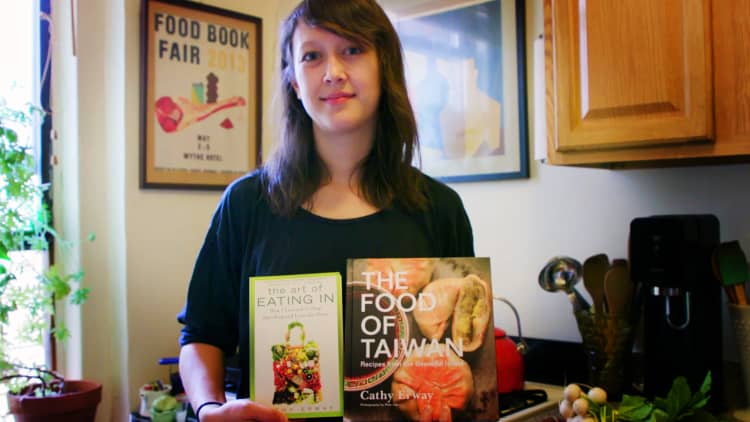In March 2016, I realized my husband and I spent over $1,000 on food the previous month. I also knew we had thrown out tons of food because we often went out or ordered takeout, despite having a refrigerator full of food. The madness had to stop.
We still have occasional months with high bills, like the first two months after our daughter was born. But these days, we spend about $700 per month on groceries for our family of three, which is largely in line with the USDA's expected average cost of food. Part of how we do this is by throwing out very little food.
Some food waste is out of your control. For example, grocery stores often refuse to stock less-than-perfect looking produce. But almost a third of that waste happens at the household level. I have found that reducing my food waste — from using old bananas to make banana bread to tossing stray vegetables into a pasta dish — has helped me get my family's grocery bill under control.
More from Grow:
This calculator tells you how much you need to retire comfortably
When and how much to tip at coffee shops, according to baristas
Warren Buffett: Long-term success of US stocks is 'very easy to predict'
Here's how we finally cut our monthly grocery bill by 30%:
1. We planned our meals in advance
Planning avoids the last minute decision crisis that often results in just ordering delivery, and it can help you purchase ingredients more thoughtfully. But be realistic: If you only have 30 minutes to cook on weeknights, plan simple meals. Save time-intensive dishes for weekends. If you are always exhausted on Friday night, plan for that.
Most weeks, we plan that Friday night is frozen pizza and Parmesan broccoli because I have zero energy to cook by then. Since we started planning a supereasy Friday night dinner, we have tossed out less food because we have actually been able to stick to our meal plan.

Video by Jason Armesto
2. We started taking advantage of the freezer
We freeze everything. We have a collection of glass containers with lids that we can write on. Everything gets labeled with date, item, and amount. We put food straight into the freezer, unless we have a plan to eat it soon so it doesn't get forgotten and lost.
We often use frozen vegetables, especially in the winter when fresh vegetables are mediocre or out of season. I shop on Saturdays, so most of my Thursday and Friday dinners use frozen vegetables to keep fresh produce from going bad.
Fresh produce is great, but frozen is equally nutritious.
3. We stopped overlooking small leftovers
If you have a small amount of leftover meat but not enough for a full meal, you probably have the beginnings of a tasty breakfast!
For example, we often partake in Milwaukee's tradition of hot ham and rolls for Sunday lunch. We buy a pound of hot deli ham and get six free rolls, but never actually eat all of it. However, two slices of ham is plenty for a breakfast sandwich, and a single roll can make breadcrumbs to top macaroni and cheese.
I've made cheesesteaks with leftover brisket and tacos with barbecue pork. I can turn a handful of leftover pasta into a delicious frittata or even a leftover pork chop into an omelet. When you get creative, you can stretch leftovers.
Repurposing leftovers keeps our menu more interesting, which makes us more likely to actually eat them. Not only do we reduce how much food we throw out, but we can save money because, for example, we buy less bacon and sausage for breakfast.

Video by Courtney Stith
4. My husband and I had an honest conversation
We all know someone who hates eating leftovers or meal planning. When you live with them, they can be an obstacle to avoiding food waste. Have an honest, respectful conversation about why you want to reduce food waste.
If it is about money, track what you spend and take pictures of what you throw out so you can visualize the problem. If it's about reducing food in landfills, discuss your eco-conscious values. Come up with strategies that both partners can live with.
If one likes leftovers and the other doesn't, maybe one can pack them for lunch. If one partner hates to plan, maybe they can cede meal planning to the other, but agree to eat whatever is made. What works for one couple may not work for another. As with almost all relationship issues, communication is key.
The article 4 Shopping and Cooking Strategies That Cut My Monthly Grocery Bill by 30% originally appeared on Grow by Acorns + CNBC.

